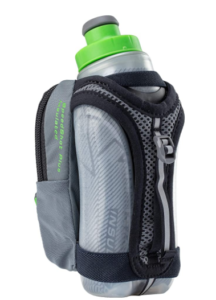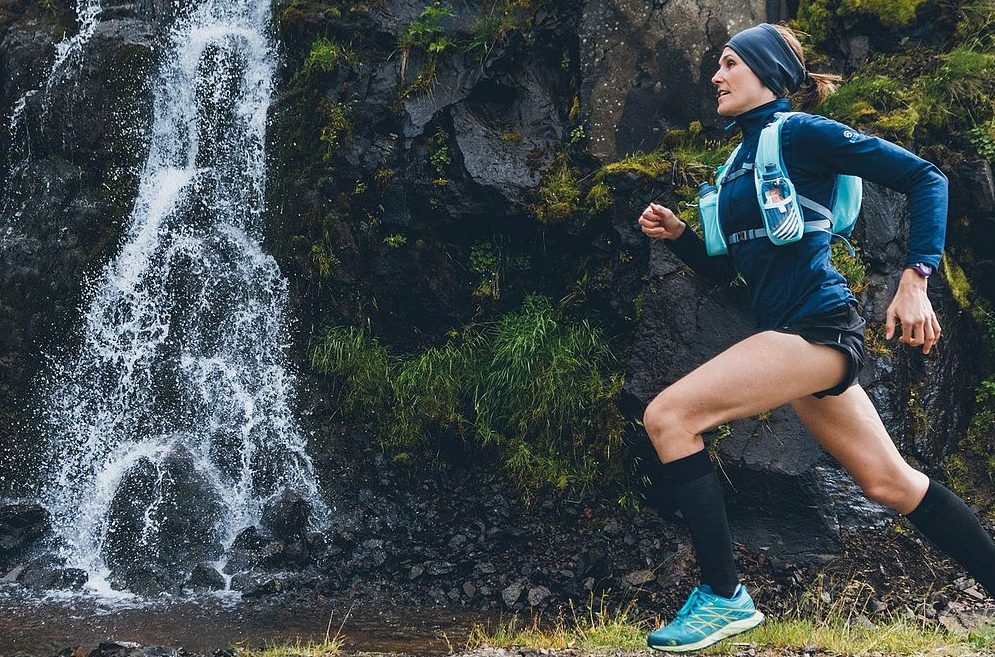3 Best Ways How To Carry Water While Running
If you are a starting runner or an aspiring marathoner, you are probably looking for tips on how to carry water while running. More and more runners ask this question as temperatures go up. And it makes sense as carrying water with you may be a game-changer during intensive runs. Luckily, there are plenty of options available out there and we will cover them in this blog post. Each item covered here meets 3 important characteristics: it is made from quality materials, it is comfortable to use and it is available for a reasonable price.
Hand-Held Running Bottles
Running with a hand-held water bottle is convenient for short to medium runs. It is nice to have something that doesn’t weigh down your shoulders or hips, so you can enjoy the freedom of running without limiting your movement. One of the advantages of this equipment is that it is quick and easy to fill up during races.
Another benefit of the hand-held bottle is that it is one of the most cost-effective ways to carry water. Holding your bottle in your hand is an option as well, but it is definitely not a very smart idea. It is simply more comfortable to attach it to your hand with a hand strap. It allows you to relax your hand without dropping the bottle and having to cease your run.
Hand-held running bottles can come in a variety of different sizes from 10 oz (300 ml) for shorter up to 24 oz (720 ml) for longer runs. With two running bottles, you can double the amount of water you can carry. They’re designed in the way that you simply point the nozzle near your mouth, squeeze and water come out easily. Many hand-held running bottles come with a small pocket optimized to store your mobile phone. It can be also very useful when you want to bring your keys or some additional nutrition. I have tried more than 5 different hand-held bottles but Nathan SpeedShot-Plus is my personal favourite.
Nathan Speedshot-Plus

It is a 12 oz (0,35 liter) bottle which is obviously not the biggest capacity. But it is perfect for about 1 hour long runs. Since Nathan SpeedShot-Plus is not so big, it does not weigh much. The weight of the bottle itself is 3,5 oz (100 grams) so filled up, it is about 15,5 oz (450 g) which is quite comfortable. It has a special pocket for your smartphone and keys. The strap holds tight comparing to similar products so you don’t have to grip it during the run. I love that the bottle contains 3M reflective fabric which is extremely useful in low visibility conditions. The price is $27.73, which is not the cheapest on the market but it is very reasonable for this quality level. I personally purchased two of them and wear them even for longer runs up to 2 hours.
Hydration Waist Belts
Hydration waist belts or waist packs are the most popular way to carry water among distance runners. For many, it is not convenient to wear bottles attached to their hands during the longer workout so waist belts become a logical choice. There are two common designs when it comes to carrying water in the waist belt: a single bottle angled diagonally across the lower back or multiple side holsters with smaller bottles.
Hydration belts work well for runners who want to carry water with their hands-free. The advantage comparing to hydration vests that we will discuss later is that belts cover the smaller size of your skin. That means a better flow of the air around your skin which leads to less perspiration. Having a hydration belt also makes it easy to carry much more essential items like phones or snacks comparing to hand-held running bottles.
But there may be a problem when you run. Hydration belts tend to bounce. It may become a major setback when the hydration belt moves up from your hips to your waist and then bounces randomly. Primarily, it all depends on the shape of the runner’s body. But it is probable that women could experience this issue more due to the shape of their hips and waist. Currently, I am using Nathan Peak Hydration Waist Belt and here are few reasons why.
Nathan Peak Hydration Waist Belt

Nathan Peak Hydration Waist Belt carries an 18 oz (535 ml) Speed Draw Flask which is ideal for medium-range runs. If you get the chance to refill on the way, it serves great on marathon-long runs as well. The bottle is easily accessible with one hand and stays perfectly in place throughout the run. Additional pockets allow you to store your phone or other accessories. Again, I personally love the reflective elements which make you be seen in dim light and do not hurt the overall design of the belt. I would say the opposite is the truth. Starting at $33, I consider it a great investment for every aspiring distance runner.
Hydration Vests
When you are running for several hours or longer, a hydration belt or hand-held running bottles might not be the best option. It may be reasonable to consider a hydration vest when you plan a long run to a remote area, mostly if you are not sure about the possibility of a refill. There is a wide range of them available on the market. Starting with smaller torso ones with lesser water carrying capacity, ending with pro full-on backpacks designed for extreme conditions.
Running with a well designed, properly fitted backpack can be surprisingly comfortable. The quality vest will minimize bouncing and chafing. But how do you find the proper one, considering they are not so cheap? One option is buying a vest in person and making sure that it can be returned without hassle. You want to be careful here. A poorly fitting vest can become so uncomfortable that you will not be able to enjoy the run at all.

Hydration vests usually have a bladder in the back to carry about 1 to 2 litres of water. Capacity can be increased by some additional bottles in the holders in front. Many hydration vests, come in men’s and women’s versions. This is because of the different shapes of male and female bodies. But there is also plenty of unisex designs that fit both genders just fine.
One important thing to remember when choosing a hydration vest is the difference between water and gear capacity. The water capacity is derived from bladder volume (for example 2 litres) plus the amount that additional bottles can carry (500 ml). The full gear capacity (for example 8 litres) is the volume of the whole vest including storage for food and accessories. Gear capacity 8 litres does not say that vest can store 8 litres of water!
My personal favourite is Nathan QuickStart Lite.
Nathan QuickStart Lite hydration vest

Nathan QuickStart Lite Vest is a unisex hydration vest for most of the runners. In case you do not plan to run in extreme conditions, this vest will serve you greatly. It has a 1,5-litre bladder capacity for water, which is the amount of water you need when running a half marathon. The total vest volume is 3 litres, which gives you enough additional space for nutrition or headlamp. Adjustable front and side straps are a matter of course. It is a lightweight quality material gear that comes in multiple colour variants. The price is very advantageous. You can have it for $50 which is amazing compared to similar products at this quality level. While you may say that it has quite a small capacity, it is fact that most of the people do not really use more than that.
Hydration guidelines
Great! Now you know what are your options when you want to carry some water on your runs! Let’s have a look and answer the 3 most common questions on hydration. I have written more on that topic here.
Do I always have to carry water with me?
No. When you go for recovery or an easy pace run that does not last more than 45 minutes, you do not need to bring water. In case it is hot, take some water if you run for more than 30 minutes. If you plan to run more than that, it is wise to have at least a handheld bottle with you.
Are sports drinks better than water?
Sports drinks such as Gatorade contain minerals (sodium, potassium) and saccharides (sugar) which are key elements for the proper functioning of our kinetic system. If you run for more than 1 hour, your saccharides and minerals storages go down and it is reasonable to replenish them with a hypotonic or isotonic drink while running. But if you run for less than 1 hour, the water will do the same job and there is no need to use sports drinks. If you are interested, I have written an article on how to make your own homemade sports drink.
What are the effects of dehydration?
Runners get dehydrated as a result of the depletion of water and electrolytes in their bodies. The symptoms of dehydration include cramping, nausea, fatigue or muscle spasms – to name just a few. According to statistics, one in five runners experiences it regularly. It is crucial to hydrate yourself regularly, mostly during longer runs. Drink smaller amounts of liquids even if you don’t feel thirsty. Don’t drink too much! This could lead to cramps and stomach bloating making it impossible to run.




